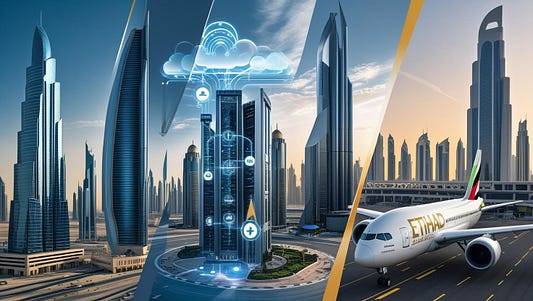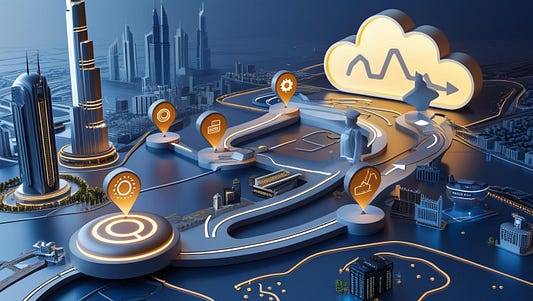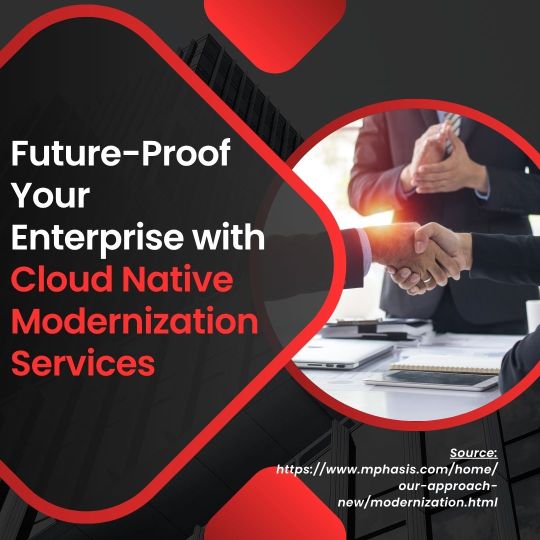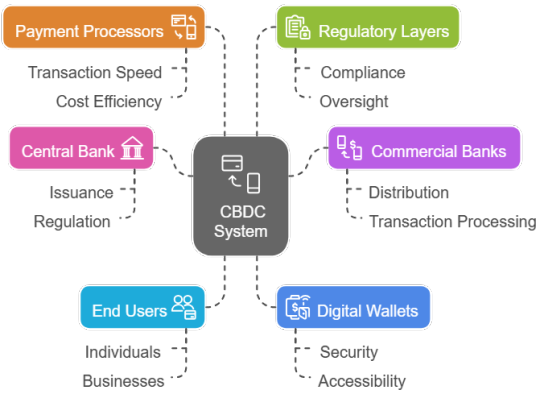#application modernization
Explore tagged Tumblr posts
Text
Don't Just Build It, Craft It: Unleashing the Power of SPRWork's Product Design Services
Imagine your next big idea, not just existing, but thriving. It's not just about functionality, it's about sparking emotions, guiding interactions, and leaving a lasting impression. That's where SPRWork, your trusted partner in product design services, comes in.

What sets us apart?
We're more than just designers; we're strategic storytellers and user experience champions. We don't just create products, we craft experiences that connect with your audience on a deeper level.
What we offer:
Expert guidance: From ideation and research to prototyping and development, our team guides you through every step, ensuring your product aligns with both your vision and your users' needs.
Data-driven decisions: We utilize research and analytics to understand your target audience and inform every design decision, maximizing the user experience and your ROI.
Unmatched creativity: Our designers are passionate innovators who blend cutting-edge trends with timeless principles to create visually stunning and functionally intuitive products.
Seamless collaboration: We prioritize open communication and a collaborative approach, keeping you involved throughout the process to ensure we deliver a product that exceeds your expectations.
Why choose SPRWork?
Proven track record: We boast a portfolio of successful projects across various industries, showcasing our ability to adapt and excel.
Tailored solutions: We understand that every product is unique. We offer flexible engagement models and customizable packages to fit your specific needs and budget.
Focus on results: We're committed to helping you achieve your business goals. We track key metrics and deliver quantifiable results that contribute to your overall success.
Investing in SPRWork's product design services is an investment in your product's potential. Let us transform your idea into a reality that resonates with your users and fuels your business growth.
Ready to unleash the power of design? Contact SPRWork today!
#application modernization#cloud solutions#web design#web development#webdesign#software#webdevelopment#website#websitedesign
4 notes
·
View notes
Text
Castle Interactive LLC is a one-stop technology solution for Web, Mobile, Design & Development. Our experts specialize in offering Application Modernization, Data Warehouse Snowflake Modernization, Advanced Data Analytics Visualization, Artificial Intelligence & Machine Learning Solutions.
#web developing company#webdesign#website#application development#graphic design#artificial intelligence#application modernization#programming#cloud solutions
3 notes
·
View notes
Text
Mainframe Modernization services with vrnexgen
VRNexgen offers end-to-end mainframe modernization services, transforming legacy systems into agile, secure, and cloud-ready platforms. With expertise in z/OS, DevOps, APIs, and AI, we help enterprises improve performance, reduce costs, and future-proof their IT infrastructure.
#mainframe modernization#vrnexgen#legacy systems#mainframe modernization services#legacy system modernization#application modernization services#application modernization
0 notes
Text
Why UAE Enterprises Are Racing to Modernize Mainframes in 2025

Introduction
United Arab Emirates has become a hotbed of innovation and digitalization. As the government launches ambitious plans such as UAE Digital Government Strategy 2025, Smart Dubai, and National AI Strategy, businesses are being urged to modernize their IT infrastructure at breakneck speed. However, most large institutions, particularly banking, aviation, oil and gas, and government institutions, are still stuck on legacy mainframe systems.
By 2025, mainframe modernization is no longer a distant IT vision but an immediate strategic necessity. This blog explores why UAE businesses are making modernization their top priority, the dangers of stagnation, the optimal methods for change, and how the transition fits into the country’s broader digital aspirations.
Understanding the Role of Mainframes in the UA

Mainframes have been the workhorse of mission-critical activities for decades. Their design enables them to process huge workloads, provide high availability, and process intricate transactions at scale. Mainframes, though old, are still running in most sectors because of their dependability but cannot adapt to current agile technologies.
Use Cases in the UAE:
Banking & Finance: Secure processing of millions of transactions per day.
Government Services: Managing identity records, vehicle registrations, and immigration databases.
Aviation: Airline reservation systems and cargo logistics.
Oil & Gas: Overseeing field operations, logistics, and worldwide distribution.
These systems are heavily entrenched within operational processes. Yet, their antiquity and inflexibility pose huge obstacles in a world of cloud-native applications, real-time data analysis, and customer-focused digital experiences.
What’s Driving the Need for Modernization in the UAE

1. Regulatory Pressures & Compliance: The UAE has rigorous data governance and cybersecurity regulations. With new data privacy legislation like the UAE Personal Data Protection Law and rules by the Central Bank and NESA, old systems lack the ability to provide auditability, transparency, and responsiveness. Contemporary platforms assist in supporting compliance with these changing mandates.
2. Transformation to a Digital Government UAE government has set a priority for digital-first services for every ministry. Legacy infrastructure slows this shift by not having transparent API integration, mobility, and support for automation.
3. Cloud-First Mandate: Programs such as Cloud-First Policy and collaborations with hyperscalers (AWS UAE Region, Microsoft Azure UAE, Oracle Cloud) promote organizations’ migration towards scalable, safe cloud settings.
4. Shrinking Talent Pool: COBOL, PL/I, and other mainframe qualifications are turning into a rarity, particularly in the UAE where the need for cloud, AI, and DevOps professionals is increasing exponentially. Enterprises encounter recruitment bottlenecks and increased expenses when keeping these vintage systems running.
5. Increasing Operating Costs: Keeping legacy infrastructure working in terms of licensing, electricity, physical space, and hardware refresh is far more expensive compared to running on containerized or serverless designs.
6. Customer Expectations: Today’s users are used to instant responses, frictionless digital experiences, and multi-channel interaction — all of which are hard to realize with inflexible mainframe architectures.
7. Integration of AI and Data Analytics: Mainframes are not inherently equipped for real-time data processing or AI workloads. With the UAE opting for smart services, real-time intelligence is not negotiable. Legacy environments don’t possess the flexibility to connect to platforms that enable predictive analytics and automation.
Risks of Not Modernizing in 2025

1. Loss of Competitive Edge: Digital-born competitors will leave traditional organizations behind in introducing new features, rolling out services, and tailoring customer experiences.
2. Security Risks: Mainframes do not support contemporary encryption standards and multi-faceted defenses, posing an easy target for cyber threats and data breaches.
3. Incompatibility with AI & Analytics: Mainframe data tends to remain siloed and hard to extract, process, or visualize, hampering organizations from harnessing AI and predictive analytics.
4. Vendor Lock-In: Proceeding with proprietary mainframe ecosystems results in excessive vendor reliance and low interoperability.
5. Operational Downtime Risks: Older infrastructure makes system failures and outages more likely — potentially disrupting mission-critical services.
6. High Maintenance Costs: Software licensing, minimal upgrades, and specialist maintenance render mainframes an expensive drain relative to elastic cloud infrastructure.
Modernization Strategies for UAE Enterprises

Modernization is not a one-size-fits-all approach. Companies have to assess their legacy environments, risk tolerance, compliance requirements, and budget.
1. Rehosting (Lift-and-Shift): Transfer applications to cloud infrastructure with negligible code changes.
Example: Banking application migration to Microsoft Azure UAE for improved scalability.
Best suited for: Rapid wins without app redesign.
Challenges: Will not exploit full power of cloud-native models.
2. Replatforming: Transition from mainframe OS to newer cloud environments with business logic preserved.
Example: Migrating government services off z/OS onto containerized Red Hat OpenShift platforms.
Benefit: Enhances maintainability and DevOps compatibility.
Challenges: Still has remaining legacy codebase dependencies.
3. Refactoring / Rearchitecting: Re-implementation of legacy applications using new languages (Java, .NET) and de-coupling into microservices.
Ideal for: Long-term flexibility, cloud-native adoption, AI enablement.
Challenges: High development expense and time; requires strategic planning.
4. Replacing with SaaS: Transition to commercial off-the-shelf SaaS offerings that provide similar or superior functionality.
Example: Upgrading legacy CRM to Salesforce or Oracle Fusion in cloud.
Benefit: Reduced TCO and automatic upgrades.
5. Retiring and Archiving: Identify and retire old components no longer supported by business priorities.
Benefit: Eliminates clutter, enhances operational focus, saves costs.
Successful Modernization Case Studies in the UAE

1. Emirates NBD:
Transitioned legacy systems to a real-time API-based platform.
Facilitated mobile-first banking and customer customization.
Cut IT operations cost by 35%.
Accelerated feature deployment cycle by 60%.
2. Dubai Smart Government:
Transferred services from proprietary legacy infrastructure to cloud-based scalable microservices within UAE-based data centers.
Enhanced access to public services by 60%.
Launched digital payments and identity systems connected with AI.
3. Abu Dhabi National Oil Company (ADNOC):
Upgraded refinery and logistics management systems using Microsoft Azure.
Implemented predictive analytics and IoT solutions.
Cut downtime occurrences by 45%.
4. Etihad Airways:
Transitioned away from legacy ticketing systems to real-time digital platforms.
Facilitated smooth booking experiences and live customer support.
Scaled seamlessly to meet peak global traffic.
Step-by-Step UAE Enterprises Modernization Roadmap

1. Assess and Inventory:
Review all applications and dependencies.
Utilize tools such as CAST Highlight, Micro Focus, or IBM ADDI.
2. Define Business Priorities:
Identify business-critical workloads and modernization priorities (cost, compliance, agility).
3. Select the Right Approach:
Select rehosting, refactoring, or hybrid approach according to risk and complexity.
4. Engage Local Expertise:
•Collaborate with UAE-headquartered cloud partners who are aware of local regulations, hosting laws, and compliance.
5. Governance & Training:
Define modernization KPIs.
Skill up teams in DevOps, security, and cloud-native design.
Create agile pipelines for accelerated delivery cycles.
6. Pilot, Scale, and Optimize:
Pilot with low-risk applications.
Iterate and optimize performance and costs.
Utilize continuous testing and CI/CD pipelines to enable seamless transitions.
7. Regulatory Alignment:
Ensure all modernized systems comply with NESA, PDPL, and sector-specific compliance regulations.
Utilize cloud regions that provide data sovereignty in the UAE.
How Impronics Technologies Can Assist

Impronics Technologies offers expertise in legacy-to-modern transformations, which are specifically designed for the UAE market. Our consultants:
Perform in-depth mainframe appraisals
Create cloud migration strategies
Re-architecture mission-critical applications for Kubernetes, Azure, or AWS
Provide compliance-first architectures that conform to UAE legislation
Our in-country expertise includes:
Banking & Finance: PCI-DSS compliant new-generation banking platforms
Government: Secure, API-ready e-government infrastructure
Oil & Gas: Predictive maintenance through IoT modernization
Let’s create the future of IT in the UAE — beginning with your legacy systems.
Conclusion
As digital transformation becomes increasingly rapid throughout the UAE, businesses can no longer afford to be held back by legacy infrastructure. Mainframe modernization is not an issue of technology alone — it is a differentiator for competitiveness, a compliance imperative, and an enabler of innovation.
Whether you’re a bank looking to innovate with AI, a government agency moving toward Smart Nation goals, or an enterprise seeking operational agility, modernizing your legacy systems is the first step toward future-readiness.
Don’t let the past hold your enterprise back. It’s time to modernize, transform, and lead.
Must Visit - www.impronics.com
#Mainframe Modernization#Legacy System Migration#Digital Transformation UAE#Cloud Migration Strategies#Enterprise IT UAE#UAE Tech Trends 2025#Modern IT Infrastructure#DevOps UAE#Cloud Computing UAE#Government Digital Transformation#UAE Enterprise Solutions#Application Modernization#Smart Government UAE#Cloud Adoption Middle East#IT Compliance UAE
0 notes
Text

Future-Proof Your Enterprise with Cloud Native Modernization Services
0 notes
Text
CBDC technology partner India

As CBDCs become a global reality, Prodevans equips banks with everything needed to enter the digital currency ecosystem. We provide full-spectrum CBDC implementation — including compliant architecture, token management, real-time reconciliation, secure wallet enablement, and 24/7 L1/L2 support. Trusted for our role in India’s national rollout, we help institutions go beyond pilots to scalable, production-ready platforms ensuring seamless end- user readiness. Our services ensure central bank compliance while delivering performance, observability, and rapid response to evolving regulatory needs. Whether you’re in the pilot phase or preparing for production rollout, Prodevans supports your CBDC journey at every step.
OUR ADDRESS
403, 4TH FLOOR, SAKET CALLIPOLIS, Rainbow Drive, Sarjapur Road, Varthurhobli East Taluk, Doddakannelli, Bengaluru Karnataka 560035
OUR CONTACTS
+91 97044 56015
#CBDC (Central Bank Digital Currency)#Cloud Computing & Cloud Services#Application Modernization#360° Monitoring (Server#Application#Database & Virtualization Monitoring)#Identity & Access Management (IAM)#Automation (incl. ML‑driven#Ansible#network/cloud automation)#DevOps Tools & Support#Infrastructure Management (IaaS/PaaS/SaaS#orchestration#orchestration tools)
0 notes
Text
#quality assurance#software engineering#software quality assurance#artificial intelligence#softwaretesting#machine learning#digitaltransformation#digital engineering services#techinnovation#application modernization
0 notes
Text
Revolutionize Your Receivables with Atcuality’s Collection Platform
Struggling with outdated manual collection processes? Atcuality’s comprehensive cash collection application provides everything your business needs to streamline payment collection and reconciliation. Our feature-rich platform supports real-time monitoring, customizable workflows, multi-currency support, and advanced security features. Designed to empower field agents and finance managers alike, our application reduces operational overhead while improving transparency and accountability. Seamless integration with ERP systems ensures smooth data flow across your organization. From retail networks to field services and utility providers, businesses trust Atcuality to simplify collections and boost cash flow. Partner with us to modernize your operations, improve customer satisfaction, and drive sustainable growth. Experience digital transformation with Atcuality.
#seo marketing#digital marketing#artificial intelligence#iot applications#seo agency#seo services#azure cloud services#seo company#amazon web services#ai powered application#cash collection application#software engineering#software testing#software company#software services#information technology#software development#technology#software#software consulting#applications#application development#mobile application development#ai applications#application security#application modernization#application process#application services#app design#app developers
1 note
·
View note
Text
Engineering Excellence into Every Digital Experience - Atcuality
Atcuality is at the forefront of software innovation, delivering customized solutions for businesses across industries. With a focus on functionality, security, and scalability, we design applications that adapt to your evolving business needs. Our projects span mobile apps, enterprise software, and integrated systems that bridge communication gaps and enhance productivity. A core part of our offerings includes our proprietary cash collection application, built to support field executives and finance teams in tracking, managing, and optimizing daily collections. It ensures data accuracy, enforces accountability, and provides real-time visibility into receivables. With features like GPS tracking, on-site digital receipts, and backend sync, it's a game-changer for businesses that deal with high-volume cash transactions. Partner with Atcuality to turn your digital vision into a robust, scalable reality.
#artificial intelligence#ai applications#augmented and virtual reality market#website development#augmented reality#digital marketing#information technology#web design#web development#application development#software#application#app#applications#app development#app developers#app design#application modernization#custom application development#application security#application process#software development#software engineering#software testing#software company#software services#cybersecurity#technology#software solutions#emailmarketing
0 notes
Text
#application modernization#cloud solutions#web design#software#web development#webdesign#webdevelopment#website#websitedesign
3 notes
·
View notes
Text
In the digital age, businesses across various industries rely heavily on software applications to streamline their operations, enhance productivity, and improve customer experiences. Application Development and Maintenance (ADM) plays a crucial role in ensuring that these applications remain functional, efficient, and relevant over time. This article delves into the intricacies of ADM, exploring its definition, processes, benefits, and challenges.
#web developing company#webdesign#application development#website#application modernization#machine learning#graphic design
3 notes
·
View notes
Text
Scale Smarter with AI-Powered Telegram Bots - Atcuality
Manual tasks and delayed responses are a thing of the past. At Atcuality, we help businesses streamline operations and engage users in real time with bots that do more than just send messages—they execute strategies. Midway through our digital automation portfolio, you’ll find our high-performance Telegram Bot Creation service, designed for scale and custom functionality. Whether you need a bot to process transactions, deliver personalized content, or handle ticketing and notifications, we’ll build a solution that integrates effortlessly with your systems. Our bots work around the clock, reducing costs while improving speed, accuracy, and user satisfaction. When it comes to intelligent automation, Atcuality delivers performance you can message about.
#cash collection application#digital marketing#blockchain#web app development#web design#virtual reality#amazon web services#augmented reality#ai applications#web developers#telegram#telegram bot#telegram channel#applications#app development#mobile application development#mobile app development#custom app development#app development company#app developers#app design#application#software#app developing company#ai powered application#app#information technology#application modernization#application development#application process
0 notes
Text
Why Application Modernization Matters for Manufacturing Sector?

App modernization enables manufacturers to integrate IoT, improve analytics, and achieve sustainability goals. Read the blog to know how it future-proofs operations.
0 notes
Text

Modernize Legacy Systems with Cloud Native Architectures
0 notes
Text
How Edge Computing Is Transforming Application Deployment and Customer Experience

In today’s digital-first economy, application deployment is evolving rapidly, driven by the rise of edge computing. As organizations aim to deliver faster, smarter, and more personalized experiences, traditional cloud computing models are no longer enough. Edge computing is not only revolutionizing where and how applications are deployed but also playing a vital role in application modernization and customer experience transformation.
In this blog, we’ll explore how edge computing is reshaping the application landscape and why it’s critical for businesses to adopt this shift to remain competitive.
Understanding Edge Computing
Edge computing refers to the processing of data closer to its source on devices, sensors, or local edge servers rather than sending it to a centralized data center. By localizing data processing, edge computing minimizes latency, improves real-time decision-making, and reduces dependency on high-bandwidth connections.
This decentralized approach is essential for the performance demands of modern applications, especially in industries leveraging IoT, 5G networks, artificial intelligence (AI), and real-time analytics.
Why Traditional Cloud Models Need an Upgrade
Cloud computing has been a powerful enabler for digital transformation over the past decade. However, as businesses move towards application modernization and demand real-time, low-latency services, cloud-only infrastructures reveal significant limitations.
Modern users expect immediate responses and personalized services. Applications reliant solely on distant cloud servers often struggle to meet these expectations, affecting both performance and the overall customer experience transformation journey.
How Edge Computing Is Redefining Application Deployment
1. Driving Real-Time Processing for Enhanced Performance
One of the standout benefits of edge computing is its ability to enable real-time processing. Applications deployed at the edge can react instantly to user inputs, sensor data, or environmental changes without the delay associated with cloud communication.
For businesses aiming for superior customer experience transformation, real-time responsiveness is non-negotiable. Whether it's in smart retail, connected healthcare, or autonomous vehicles, edge-enabled applications create fluid, seamless interactions that customers demand.
2. Fueling Application Modernization Initiatives
Modernizing legacy applications is crucial for staying relevant. Application modernization involves updating outdated systems to more agile, flexible, and scalable architectures.
Edge computing acts as a catalyst for this transformation by enabling microservices architectures, containerized deployments, and event-driven frameworks—all distributed closer to the end user. Businesses can modernize applications without entirely dismantling their existing IT infrastructure, leading to faster innovation cycles and reduced operational costs.
3. Boosting Data Privacy and Security
Privacy concerns are at an all-time high. Processing sensitive data locally through edge computing reduces the risk associated with transmitting information over long distances to centralized cloud servers.
For sectors like healthcare, finance, and government, where regulations around data protection are strict, deploying applications at the edge ensures higher security standards while still enabling customer experience transformation through digital services.
4. Achieving Scalability Through Distributed Architecture
Edge computing allows applications to scale horizontally by deploying smaller, localized instances across multiple edge locations. This distributed architecture supports regional customization, load balancing, and service continuity even when parts of the network face outages.
For businesses undergoing application modernization, scalable, resilient deployments are a cornerstone for delivering consistent services to users worldwide.
5. Enabling New Business Models and Revenue Streams
With 5G expanding the possibilities of IoT and smart devices, edge computing is unlocking new business models. Real-time predictive maintenance in manufacturing, intelligent retail analytics, and personalized healthcare monitoring are just a few examples.
Deploying applications at the edge enables enterprises to innovate quickly, create differentiated services, and lead the next wave of customer experience transformation.
Industries Being Transformed by Edge Deployment
Manufacturing: Smart factories leverage edge for predictive maintenance and quality control.
Healthcare: Remote patient monitoring and AI-driven diagnostics depend on real-time processing and secure local data management.
Retail: Personalized shopping experiences, dynamic pricing, and frictionless checkouts rely on edge-deployed applications.
Transportation: Autonomous vehicles, traffic management systems, and fleet tracking operate more efficiently with edge-based computation.
Energy: Real-time monitoring of energy grids and remote assets benefits greatly from localized processing power.
Challenges to Overcome
Despite its advantages, edge computing introduces challenges:
Infrastructure management: Orchestrating deployments across thousands of distributed nodes can be complex.
Security risks: Each edge device or node is a potential attack point if not properly secured.
Standardization gaps: The lack of universal standards makes integration and interoperability difficult.
Successful edge strategies must address these hurdles with robust governance, automation tools, and security best practices.
Conclusion
As organizations push forward with application modernization and strive for exceptional customer experience transformation, edge computing stands out as a critical enabler. By supporting real-time processing, ensuring low latency, enhancing data privacy, and enabling scalable and resilient deployments, edge computing redefines how applications are developed, deployed, and experienced.
Businesses that embrace edge-driven strategies today will be well-equipped to meet the dynamic demands of tomorrow’s digital economy, leading innovation while delivering unmatched value to their customers.
1 note
·
View note